ASM Metals HandBook Vol. 8 - Mechanical Testing and Evaluation
Подождите немного. Документ загружается.


• J.E. Ritter, Ed., Erosion of Ceramic Materials, Trans Tech Publications, Switzerland; also published as
Key Engineering Materials, Vol 71, 1992
Sliding Contact Damage Testing
Introduction
SURFACE DAMAGE from sliding contact is related to the adhesion of the mating surfaces in contact.
Adhesion is a major contributor to sliding resistance (friction) and can cause loss of material at the surface (i.e.,
wear) or surface damage without a loss of material at the surface (e.g., galling or scuffing). Adhesion is clearly
demonstrated in sliding systems when a shaft seizes in a bearing.
The types of surface damage caused by sliding contact include adhesive wear, galling, and fretting. These three
damage mechanisms are all influenced by adhesion of the mating surfaces, but these categories also reflect the
nature of the surface damage and the type of sliding contact. For example, galling is considered a severe form
of adhesive wear that occurs when two surfaces slide against each other at relatively low speeds and high loads.
Fretting is also a special case of adhesive wear that occurs from oscillatory motion of relatively small
amplitude.
The third damage type, adhesive wear, is a little more ambiguous. Often adhesive wear is defined by excluding
other forms of wear. For example, if no abrasive substances are found, if the amplitude of sliding is greater than
that in fretting, and if the rate of material loss is not governed by the principles of oxidation, adhesive wear is
said to occur. In most cases, however, adhesive wear involves a transfer of material from one surface to
another. Adhesive wear also occurs typically from the sliding contact of two surfaces, where interfaces in
contact are made to slide and the locally adhered regions must separate, leaving transferred material. Breakout
of this transferred material will form additional debris. This separation of material results in a wide range of
wear rates, depending on the type of contact and the adhesion between the mating surfaces.
This article describes the methods for evaluation of surface damage caused by sliding contact. The first section,
“Adhesive Wear,” describes wear testing from long-distance sliding of nominally clean and dry (unlubricated)
surfaces. This is followed by sections on test methods for galling and fretting wear, which are more unique
forms of adhesive wear and surface damage. Additional information on sliding contact damage can be found in
Friction, Lubrication, and Wear Technology, Volume 18 of ASM Handbook.
Sliding Contact Damage Testing
Adhesive Wear
W.A. Glaeser, Battelle
Adhesive wear typically occurs from sliding contact and is often manifested by a transfer of material between
the contacting surfaces. As an example, Fig. 1 shows bronze transfer to a steel surface under sliding contact.
Transfer can be minute and only visible in the microscope. Deformation wear, or plastic deformation of a thin
surface layer during sliding contact, can also fall under the definition of adhesive wear. Adhesive wear can
occur along with abrasive or chemical wear conditions. A transfer layer can build up on the harder surface of a
sliding pair in the form of a mechanically mixed material (Ref 1). The transfer layer can also contain compacted
wear debris. This layer will tend to break out and form wear debris.
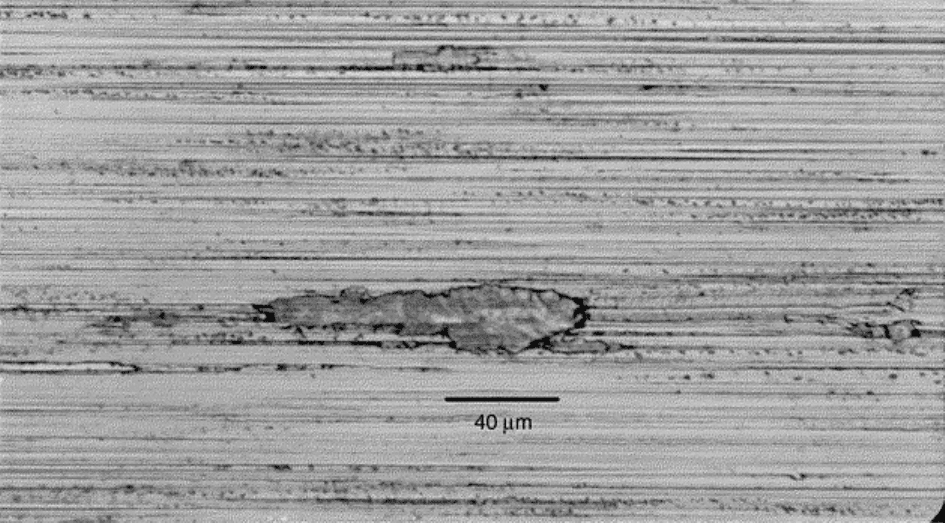
Fig. 1 Bronze transfer to a steel surface after adhesive wear during sliding contact
Adhesive wear is a function of material combination, lubrication, and environment. For instance, austenitic
stainless steels (AISI 304, 316, etc.) sliding against themselves are very likely to transfer and gall with severe
surface damage. Other materials that are prone to adhesive wear include titanium, nickel, and zirconium. These
materials make very poor unlubricated sliding pairs and can wear severely in adhesive mode even when
lubricated. Other metals are apt to show adhesive wear when dry sliding contact occurs. Rubber tends to bond
to smooth, dry surfaces (glass and polymers) by weak van der Waals forces and slide in a stick-slip mode that
involves adhesion.
A gaseous environment is an important factor in promoting adhesive wear. The lack of oxygen and water vapor
in a wear environment can aggravate adhesive wear. High vacuum conditions as found in outer space will make
adhesive wear likely. Wear tests run in simulated space conditions (10
-10
) torr reveal tendencies for various
material combinations to develop adhesive wear in that environment (Ref 2).
Adhesive wear testing can be carried out with a variety of sliding contact systems. These include four-ball,
block-on-ring, pin-on-disk, crossed cylinders, flat-on-flat, and disk machines. Examples are shown in Fig. 2.
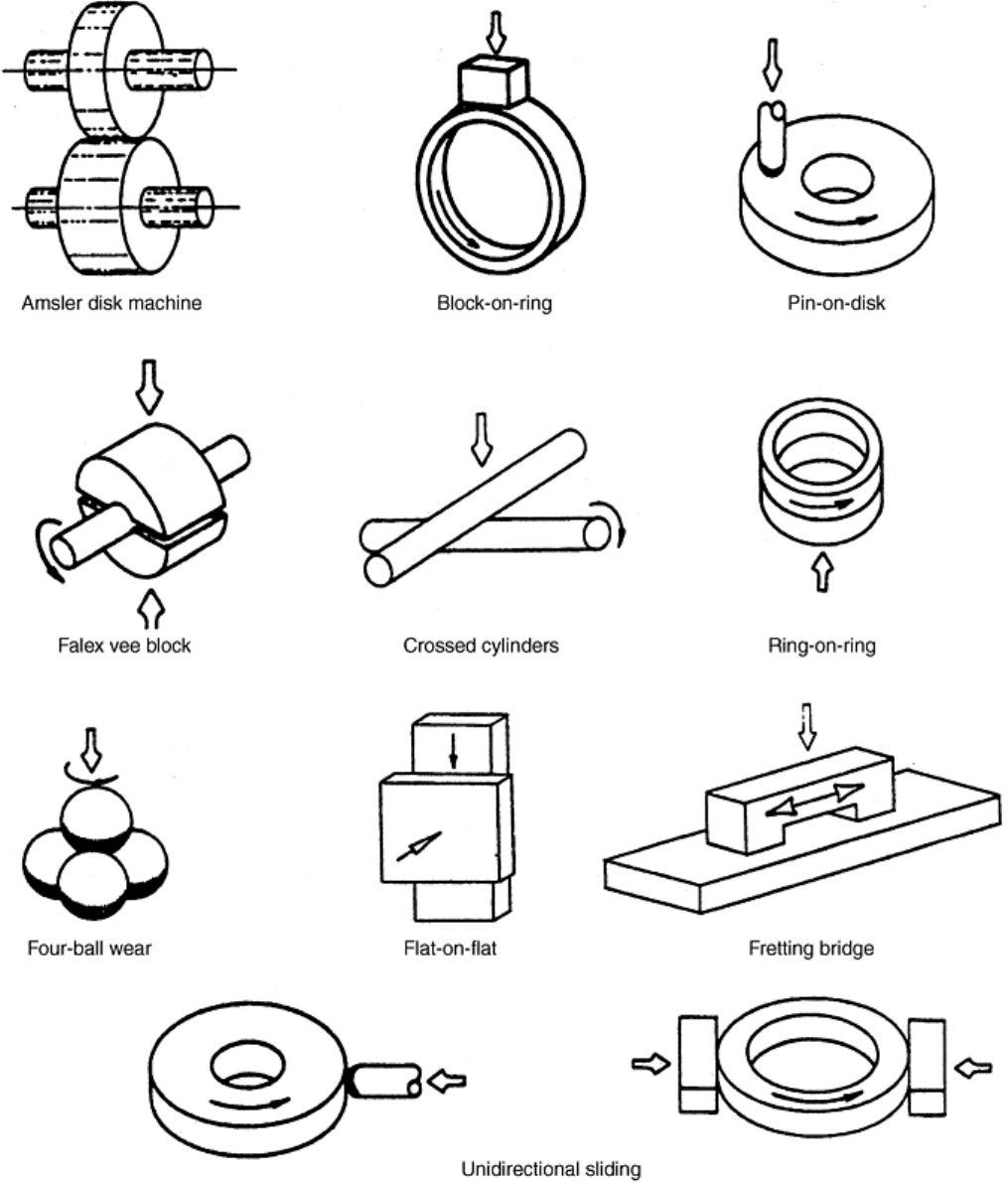
Fig. 2 Diagrams of contact types for various test machines
Adhesive wear testing (sliding contact wear, no lubrication, slow motion, heavy load) may be chosen
deliberately to investigate the resistance of a material to excessive wear and material transfer for a given
application. Adhesive wear can also occur unexpectedly in a sliding contact test and should be recognized from
the wear morphology. Typical wear scars associated with adhesive wear are shown in Fig. 3 and 4. Figure 4(a)
shows a scanning electron microscope (SEM) micrograph of an embedded steel particle in an aluminum
bearing surface; the particle is identified by the energy-dispersive x-ray spectrometry (EDX) pattern for iron
shown in Fig. 4(b). The test can be designed to determine load capacity or effects of temperature on the onset of
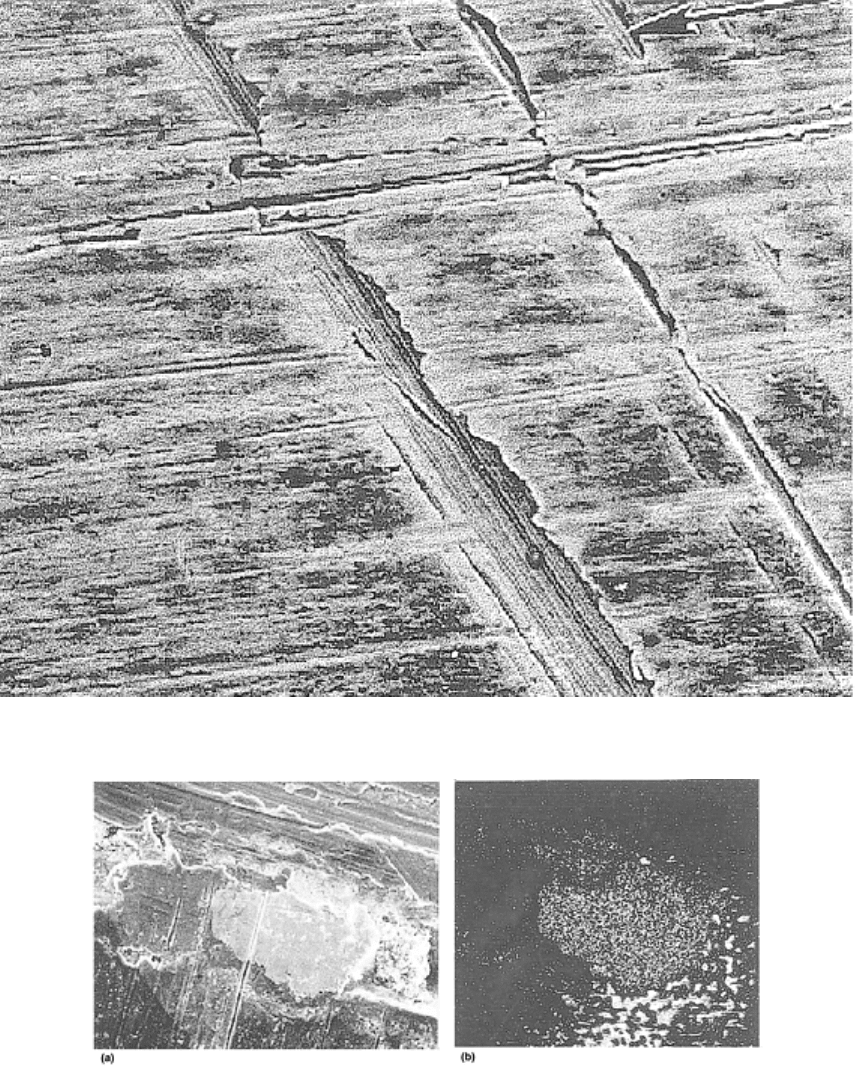
adhesive wear. These data would then be used in the design of a bearing or gear system that could operate
safely in the conditions simulated in the test.
Fig. 3 SEM micrograph of adhesive wear of cast iron
Fig. 4 Scar from adhesive wear. (a) SEM micrograph of wear scar on an aluminum bearing with
embedded steel particle from the shaft. 200× (b) EDX pattern for iron in the particle. 200×
References cited in this section
1. P. Heilman, J. Don, T.C. Sun, W.A. Glaeser, and D.A. Rigney, Sliding Wear and Transfer, Proc. Int.
Conf. Wear of Materials, American Society of Mechanical Engineers, 1989, p 1–8
2. W.R. Jones, S. Pepper, et al., The Preliminary Evaluation of Liquid Lubricants for Space Applications
by Vacuum Tribometry, 28th Aerospace Mechanisms Symposium, National Aeronautics and Space
Administration, May 1994
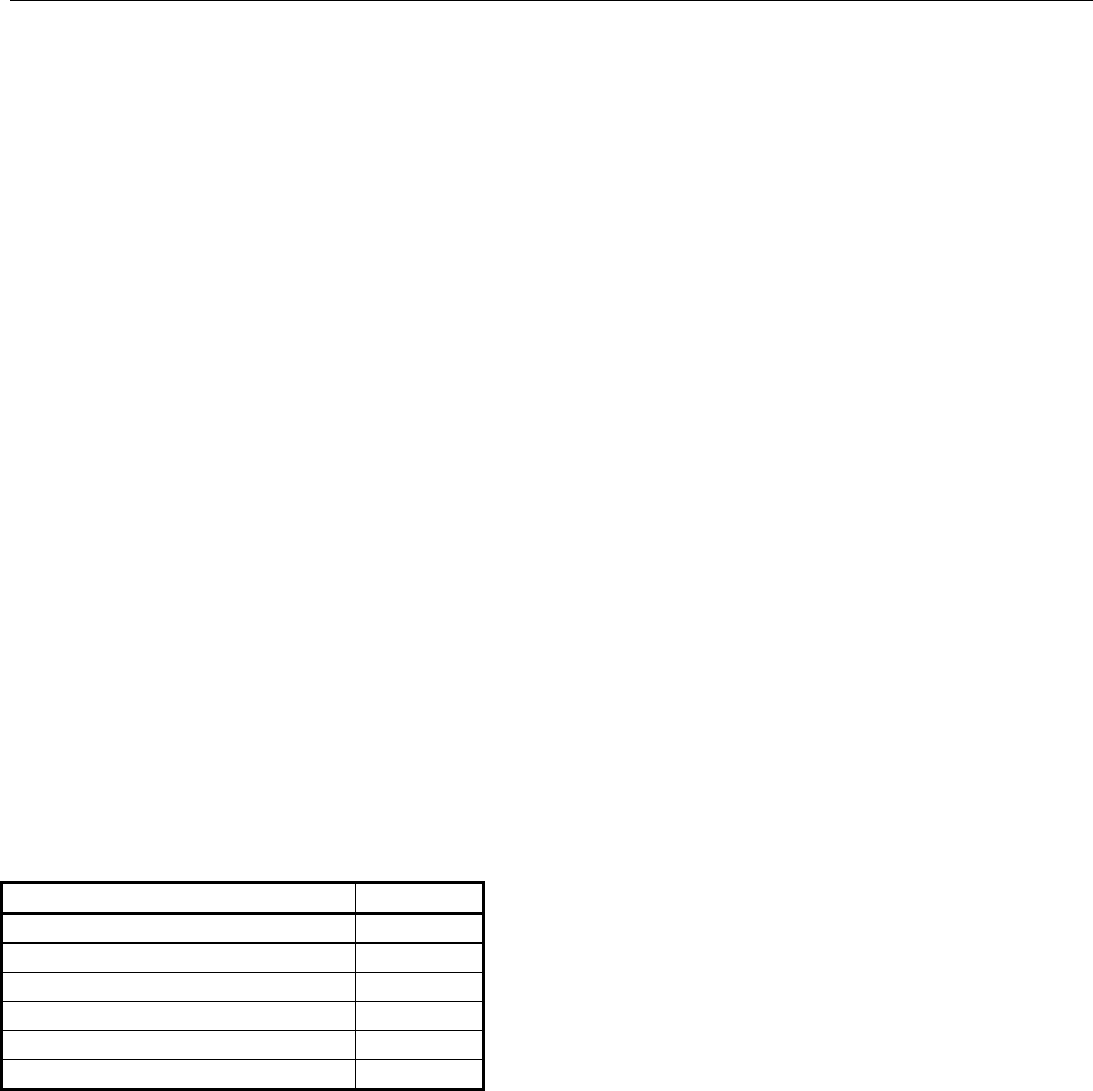
Sliding Contact Damage Testing
Adhesive Wear Terms
Adhesive wear from sliding contact occurs from the transference of material from one surface to another due to
a process of solid-phase welding (Ref 3). Particles that are removed from one surface are either permanently or
temporarily attached to the other surface. There are also a number of other terms used to describe adhesive wear
conditions, defined as follows.
Asperity refers to an isolated high spot in a given surface-roughness profile or a protuberance in the small-scale
topographical irregularities of a solid surface.
Cold welding is the bonding of surface contact points after localized softening or melting caused by the
frictional heating of contacting asperities during sliding.
Galling is a severe form of scuffing and is often associated with gross damage to the surfaces or failure. The
usage of the term galling has different intents, and therefore its meaning must be ascertained from the specific
context of the usage. Galling can be considered to be a severe form of adhesive wear, where cold welding of
asperities causes heavy transfer of surface material.
Scuffing is the formation of severe scratches in the sliding direction. Also referred to as scoring, scuffing is
considered a milder form of galling. It occurs when cold-welded junctions leave hardened protrusions, which
tend to plow and scratch the softer mating surface much like abrasion.
Seizure is the stopping of relative motion as a result of interfacial friction or by gross surface welding. Seizure
is an adhesive wear condition, where cold welding and material transfer result in loss of clearance between
mating surfaces.
Wear coefficient is a nondimensional number that is typically defined as the proportionality k factor in the
Archard wear formula (Ref 4):
W = kLD/H
where W is wear volume, L is normal load or force, D is distance of sliding, H is hardness, and k is wear
coefficient.
This equation assumes a linear process; that is, wear is proportional to the applied load and distance, and
inversely proportional to hardness. This equation is used extensively in developing data from wear tests. As an
example, assume a pin-on-disk wear test is run using a copper pin. The operating conditions are as follows (a
detailed description of the calculation and use of the wear coefficient can be found in Ref 5):
Normal load, N (kgf)
19.6 (2)
Disk speed, rpm
80
Track diameter, mm (in.)
32 (1.3)
Test duration, h
2
Pin weight loss, mg (grains)
23.1 (0.35)
Hardness of pin, HV
80
Density of copper, g/cm
3
(lb/in.
3
)
8.9 (0.3)
The wear coefficient is calculated as follows:
W = 23.⅛.9 = 260 mm
3
D = π × 32 × 80 × 120 = 9.65 × 10
5
mm
k = 2.60 × 80/9.65 × 10
5
× 2 = 1.08 × 10
-4
Wear Life Determination. Assume a 10 mm diam copper pin electrode rides against a rotating steel surface
running at 100 rpm and the allowable shortening of the pin due to wear is 10 mm. The pin load is 1 kg. The
track diameter is 70 mm. What is the approximate life of the pin?
k = 1.08 × 10
-4
Pin wear volume = π × 100 × 10 = kLD/H
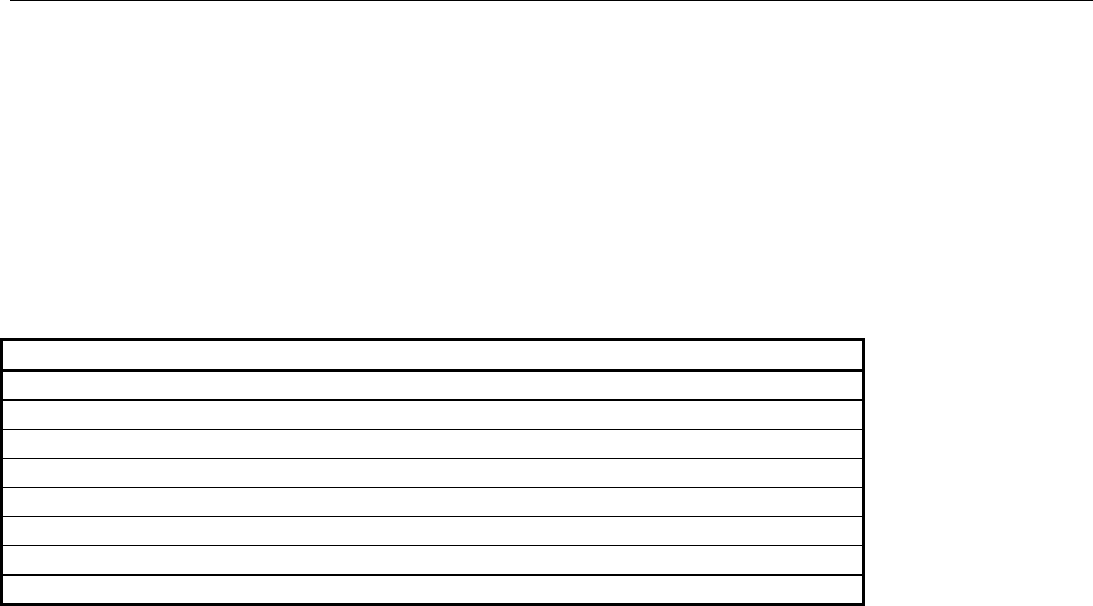
D = (3.14 × 10
3
× 80)/1.08 × 10
-4
= 2.32 × 10
9
mm
D = π × 70 × 100 × time
Time = 2.32 × 10
9
/2.2 × 10
4
= 1.05 × 10
5
min, or 1750 h
Specific wear is similar to wear coefficient, except that the hardness factor is not included. This is often used
when determining the wear properties of materials of similar hardness.
References cited in this section
3. Glossary of Terms, Friction, Lubrication, and Wear Technology, Vol 18, ASM Handbook, P. Blau, Ed.,
ASM International, 1992
4. E. Rabinowicz, Wear Coefficient—Metals, Wear Control Handbook, American Society of Mechanical
Engineers, 1980, p 475–506
5. E. Rabinowicz, Wear Coefficient—Metals, Wear Control Handbook, American Society of Mechanical
Engineers, 1980, p 475–484
Sliding Contact Damage Testing
Selecting Standard Adhesive Wear Tests
Generally, adhesive wear testing involves sliding contact between unlubricated parts. For instance, such testing
might help identify a material combination for a slow-moving brake or clutch system. Testing also could assist
in operating a sleeve bearing in a high vacuum or oxygen and water-vapor-free environment. The purpose
might be to estimate the wear life of such an operating system. The wear coefficient can be obtained from an
appropriate wear test apparatus, and the maximum wear loss can be specified.
Simulation of Operating Conditions. In selecting a standard wear test, it is important that the test come close to
simulating the prospective operating conditions of the mechanism of concern. The test should simulate the
following conditions:
Contact
Point contact (ball-on-flat, ball-on-ball, crossed cylinders)
Line contact (roller-on-flat; roller-on-roller, axes parallel)
Flat-on-flat
Conforming (sleeve or journal bearing)
Velocity and load (high speed, low load; low speed, high load; low speed, low load)
Temperature
Vibration
Gaseous environment
Contact conditions can be selected from a number of wear test configurations as are shown in Fig. 2. These are
taken from standard wear tests, and many can be found in ASTM specifications. The Amsler and Falex vee
block represent line contact systems. Point contact is represented in pin-on-disk, crossed cylinders and four-ball
tests, while flat-on-flat is shown in ring-on-ring, fretting bridge, and flat-on-flat configurations.
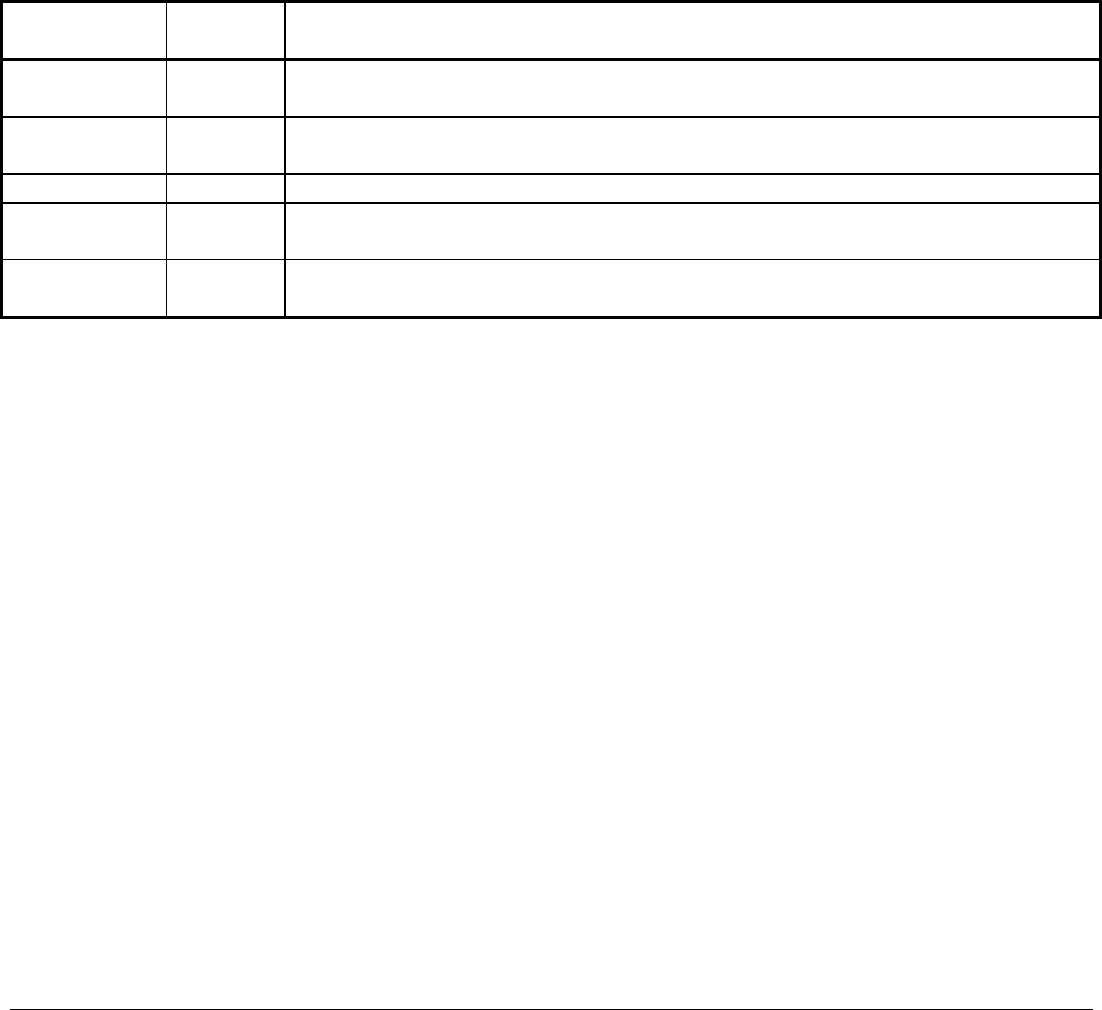
The following ASTM standards apply to the configurations shown in Fig. 2:
Test ASTM
No.
Title
Block-on-ring G 77
Standard Test Method for Ranking Resistance of Materials to Sliding Wear,
Using Block-on-Ring Test
Crossed
cylinders
G 83
Standard Test Method for Wear Testing with a Crossed Cylinder Apparatus
Pin-on-disk G 99
Standard Test Method for Wear Testing with a Pin-on-Disk Apparatus
Falex vee
block
D 2670
Standard Test Method for Measuring Wear Properties of Fluid Lubricants
(Falex Pin and Fee Block Method)
Four-ball D 4172 Standard Test Method for Wear Preventive Characteristics of Lubrication
Fluid (Four-Ball Method)
These standards are also available in Ref 6.
Temperature and Friction. Wear tests should have continuous measurement of both specimen temperature and
friction. Temperature can be measured by a thermocouple inserted in the stationary specimen near the contact
surface. A number of standard tests found in ASTM specifications have friction measuring devices included in
the description of the apparatus.
Velocity and Load. Archard's equation, as a general model of wear, assumes that wear is proportional to the
applied load and sliding distance. Distance and velocity are related, and so wear is also proportional to velocity
by Archard's equation. Because it is desirable and economical to run wear tests as quickly as possible, both the
load and the velocity can be increased to speed up a test. However, increasing these parameters will also
increase the frictional heat generation and can lead to overheating. Overheating will change the wear mode
(increasing galling and surface damage) and will result in misleading wear data. This is particularly important
in wear testing of polymers. Polymers have low thermal conductivity and low melting and softening points
compared to metals. Therefore, before embarking on a series of wear tests for statistical analysis, a set of
preliminary tests should be run to establish the most efficient method, while keeping the wear mode as expected
in the application.
Reference cited in this section
6. Friction and Wear Testing: Source Book of Selected References from ASTM Standards and ASM
Handbooks, ASM International, 1997
Sliding Contact Damage Testing
Statistical Analysis of Wear Data
Data scatter is inherent in any testing, and using a statistical approach to the analysis of wear data is desirable.
The method in ASTM G 83 (Ref 7) recommends sample sizes over 10. However, because 10 samples may not
be possible owing to availability of samples and cost, ASTM G 83 does provide a method for analysis with
sample sizes less than 10. The method uses the range of test results, where the range, R, is the difference
between the highest and lowest test values for an initial set (2 to 10 samples) of measurements. For these small
sample sizes, the standard deviation (s) can be calculated from the R value instead of from the root mean square
value. For sample sizes from 2 to 10, the standard deviation is calculated from the range of the first few test
results as follows:
s = R/d
2
where the values for d
2
are listed in Table 1 for different sample sizes.
Table 1 Factors for estimating standard deviation for sample sizes 10 and less
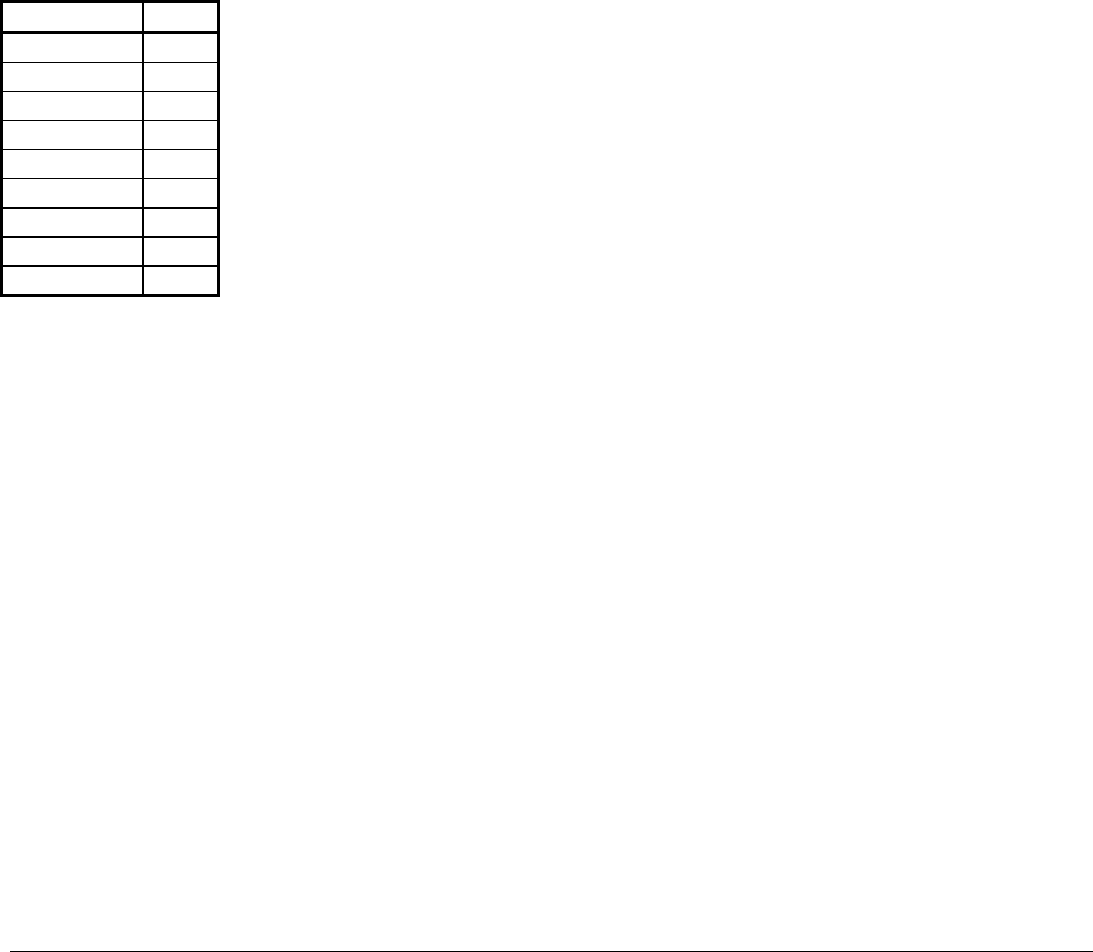
Sample size
d
2
2
1.128
3
1.693
4
2.059
5
2.326
6
2.534
7
2.704
8
2.847
9
2.970
10 3.078
Standard deviation s = R/d
2
for small sample size, where the range R is the difference between the highest and
lowest test values for an initial set (2 to 10 samples) of measurements.
Source: Ref 7
Sample size (n) estimate can be derived from the relation:
n = 1.96 ν/e
2
where ν is the percent coefficient of variation = (s/x) × 100(%), e is the sampling error, and x is the average for
n tests. For example, if s = 0.9 mg and x = 8 mg, then the coefficient of variation is 11%. If an allowable
sampling error (e) is selected as 10%, the sample size for 95% confidence limits should be (1.9 · 11/10)
2
= 5.
The results of round-robin tests from several laboratories using block-on-ring test apparatus are reported in the
appendix of ASTM G 77 (and also Ref 8). This reference shows the expected scatter in such wear tests.
References cited in this section
7. “Standard Test Method for Wear Testing with a Crossed-Cylinder Apparatus,” ASTM G 83, Annual
Book of ASTM Standards
8. Friction and Wear Testing: Source Book of Selected References from ASTM Standards and ASM
Handbooks, ASM International, 1997, p 110–114
Sliding Contact Damage Testing
Measuring Wear
A wear test should be run long enough to produce measurable wear. What constitutes measurable wear depends
on the measuring method. The easiest way to determine measurable wear is to measure weight loss. This is also
the coarsest method. Weight loss must be sufficient to be uninfluenced by condensed moisture, contaminants
such as dust and oil, and minute transfer. Dimensional change is a more sensitive method. If a well-defined
contact geometry is used such as ball-on-flat, ball-on-ball, or ring-on-flat, a scar length can be translated to
volume loss. Equations for calculating wear volume from scar dimensions are shown in Fig. 5.
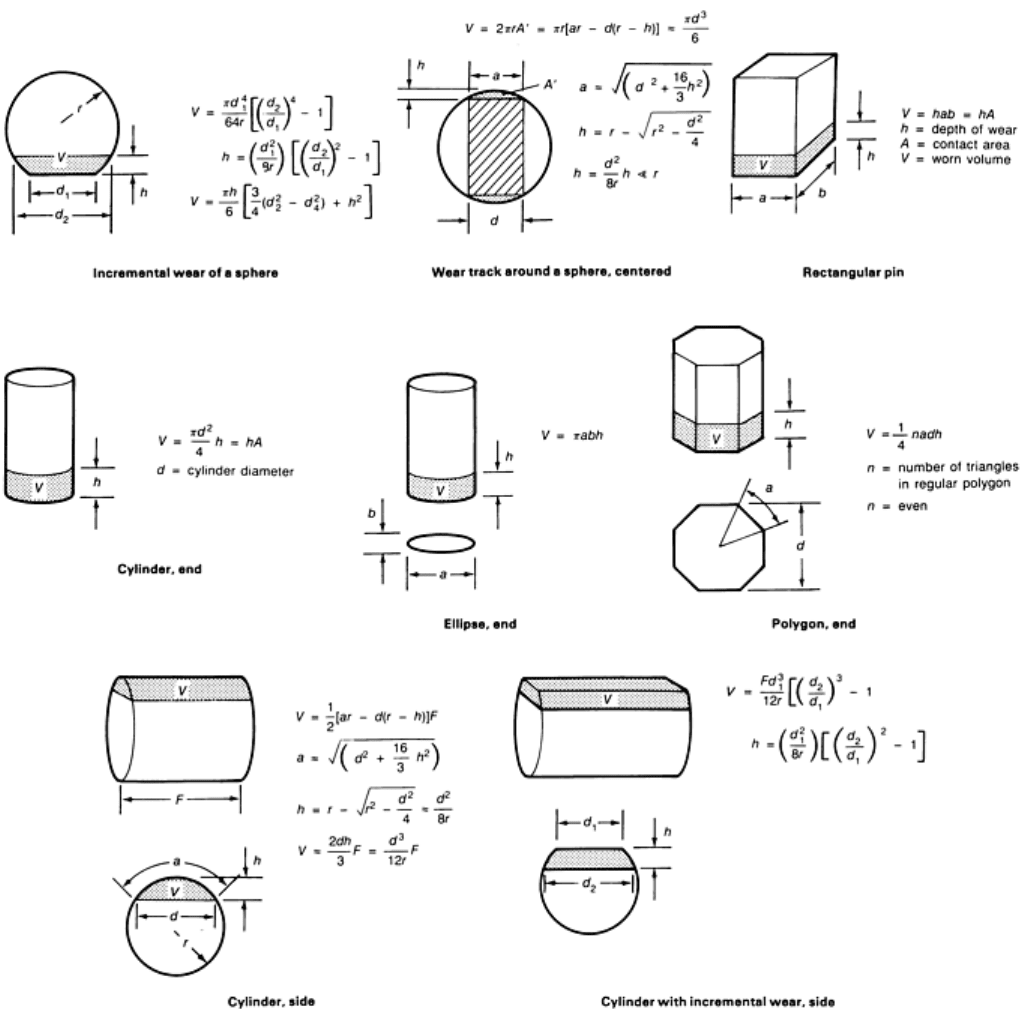
Fig. 5 Wear volume calculations for various shapes in contact with a flat surface. Source: Ref 9
Adhesive wear testing often involves some transfer from one surface to another. It is good practice to use two
methods to measure wear: scar measurement and weight loss. The volumes determined from both methods can
be compared, and effects of transfer, deformation, or pitting can be detected.
Reference cited in this section
9. A.W. Ruff, Wear Measurement, Friction, Lubrication, and Wear Technology, Vol 18, ASM Handbook,
P. Blau, Ed., ASM International, 1992, p 362–369
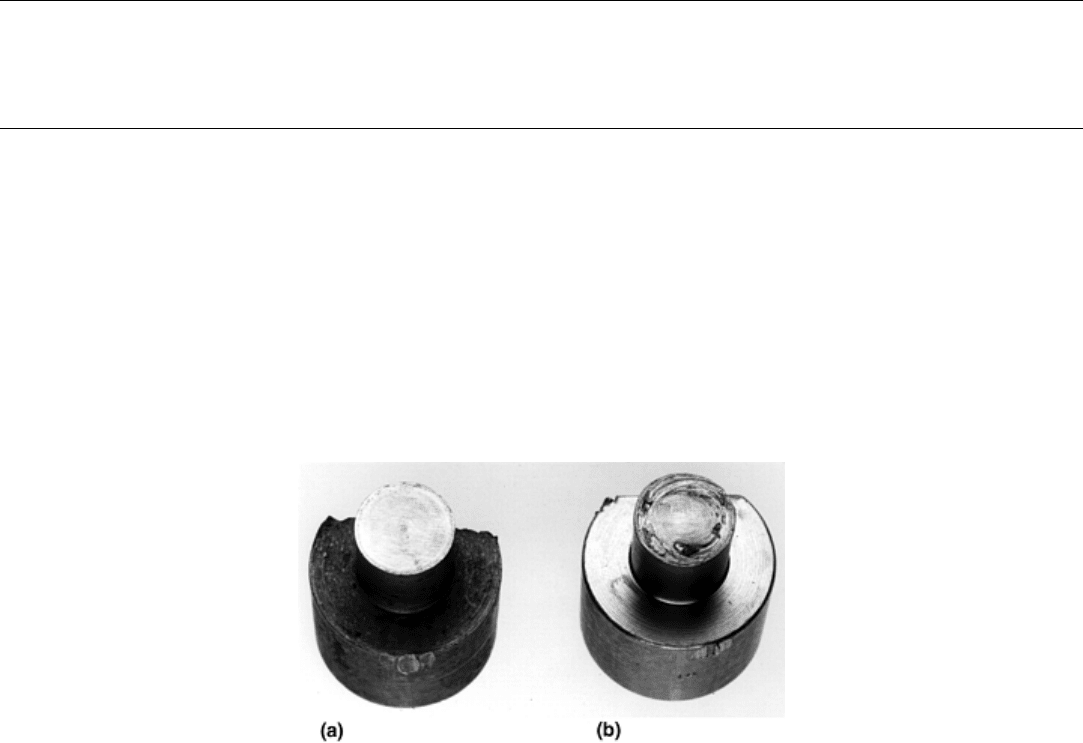
Sliding Contact Damage Testing
Galling
John H. Magee, Carpenter Specialty Alloys
Galling is a severe form of adhesive wear or surface damage that occurs when the surface of two components
slide against each other at relatively low speeds and high loads. Lubricants or coatings, designed to reduce
friction and prevent galling, are sometimes either ineffective or cannot be used due to product contamination
concerns. Thus, gross surface damage occurs and is characterized by localized material transfer or removal.
This gross surface damage is known as galling and can occur after just a few cycles of relative movement
between the mating surfaces. Severe galling can cause seizure of these parts.
When galling takes place, mated surfaces typically show distinct junctions where severe plastic deformation has
occurred (Fig. 6). These contact surfaces contain areas where asperities, or surface protrusions, from one
surface have bonded together with those on the other surface. Under low stresses, these junctions are minute
and break apart with movement resulting in adhesive wear debris. However, higher stresses produce much
larger junctions and galling (Ref 11).
Fig. 6 Galling test button specimens, after testing. (a) No galling exhibited. (b) Severe galling. Source:
Ref 10
Components that encounter galling conditions include threaded fasteners from a typical bolt/nut connection to
large threaded tubular used in oil exploration. Valve parts have mating surfaces that are designed to encounter
infrequent sliding movement. Galling damage on these surfaces affects valve performance, for example,
leaking. The interface of a roller and side plate on a continuous chain-link conveyor belt can gall when
lubrication is not used. This is an important design consideration for the conveyance of food and drug products
because lubricants are prohibited due to contamination concerns (Ref 12).
The term galling has also been used to describe surface damage caused during metalworking. Metalworking
processes include rolling, extrusion, wire drawing, deep drawing of sheet, and press-forming operations.
Insufficient lubrication sometimes causes metal transfer and galling. In Japan, the term galling is used mainly to
describe damage in sheet metalforming processes. Tests to characterize this gross surface damage usually
involve production equipment or laboratory simulation of various plastic metalworking processes. Additional
information can be found in Ref 13 and in Friction, Lubrication, and Wear Technology, Volume 18 of ASM
Handbook.
This section describes in detail the ASTM G 98 button-on-block galling test. The purpose of this test is to rank
material couples resistant to galling. Several variations of this test are also discussed that either increase the
severity of the test or attempt to quantify the surface damage using profilometry. Data obtained from button-on-
block testing are very useful in screening materials for prototype testing.
This section also describes prototype testing of threaded fasteners. Three threaded connection tests are
discussed as examples of prototype tests designed to closely simulate field service for a specific application.
This type of testing tends to be expensive, but vital before use in-service. Also, these tests can be used to solve
a specific galling problem.
